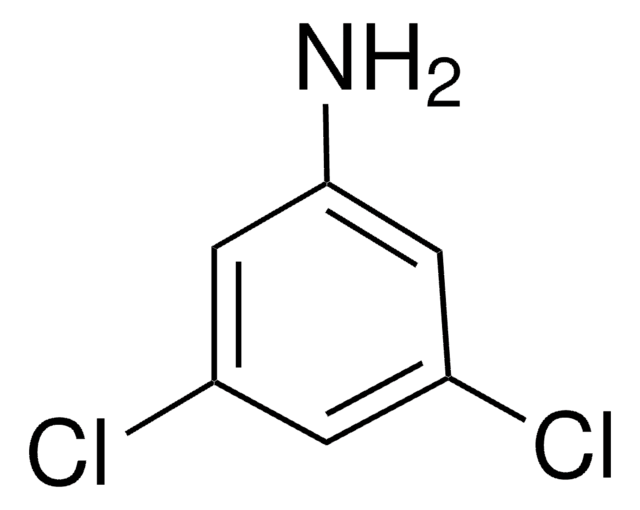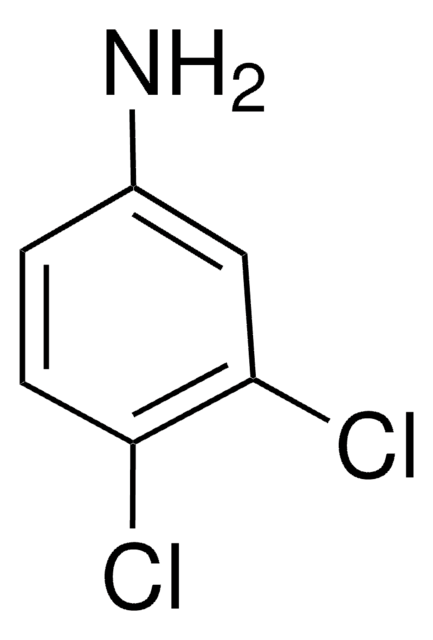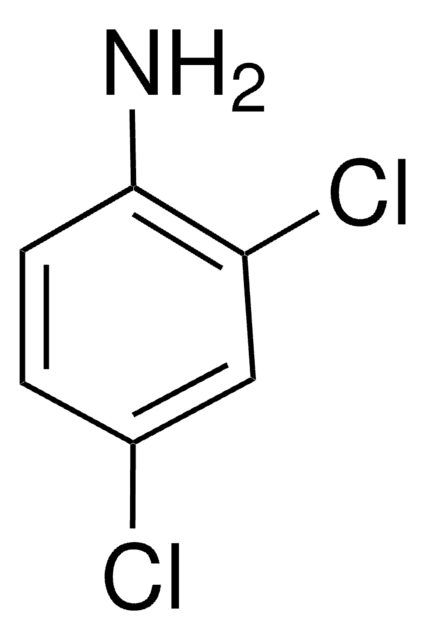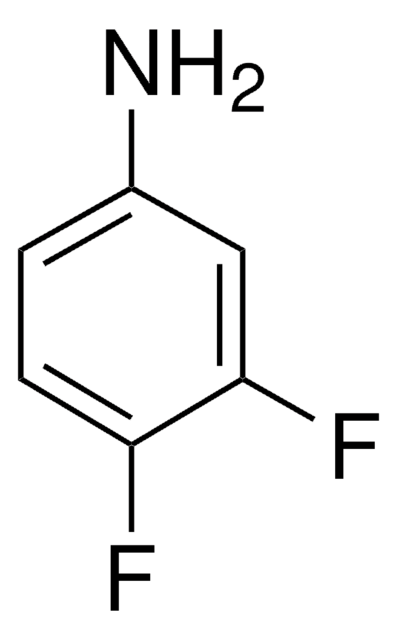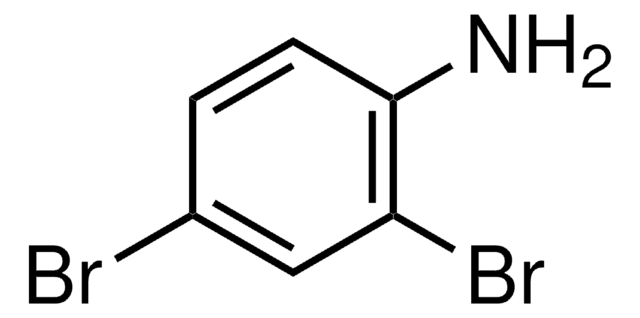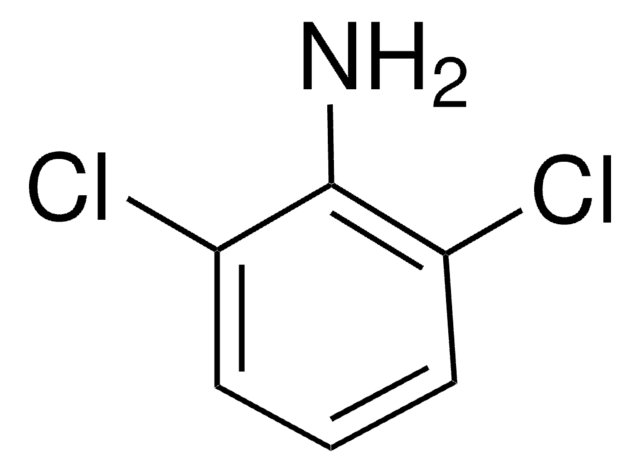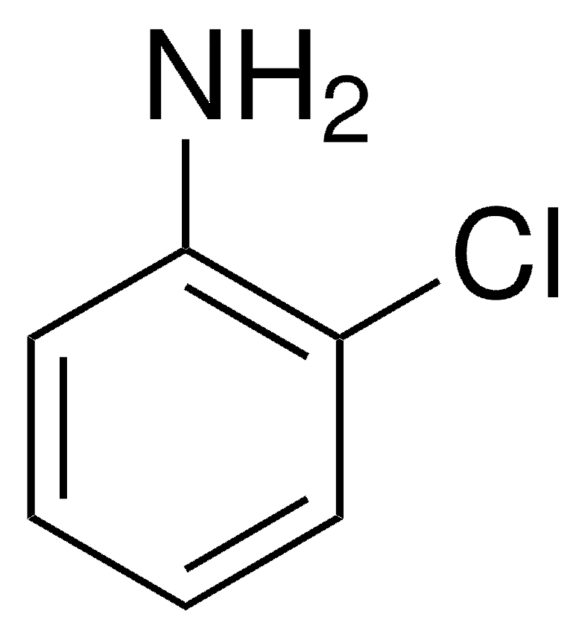112151
2,4-Dichloroaniline
99%
Sinonimo/i:
2,4-Dichlorophenylamine, 4-Chloro-2-chloroaniline
About This Item
Prodotti consigliati
Livello qualitativo
Saggio
99%
Forma fisica
solid
P. eboll.
245 °C (lit.)
Punto di fusione
59-62 °C (lit.)
Gruppo funzionale
chloro
Stringa SMILE
Nc1ccc(Cl)cc1Cl
InChI
1S/C6H5Cl2N/c7-4-1-2-6(9)5(8)3-4/h1-3H,9H2
KQCMTOWTPBNWDB-UHFFFAOYSA-N
Cerchi prodotti simili? Visita Guida al confronto tra prodotti
Descrizione generale
Applicazioni
- Phototransformation of 2,4-Dichloroaniline: Studies the phototransformation of 2,4-Dichloroaniline in freshwater environments, crucial for understanding its environmental degradation and implications for water purification technologies (Ucun et al., 2021).
Avvertenze
Danger
Indicazioni di pericolo
Consigli di prudenza
Classi di pericolo
Acute Tox. 3 Dermal - Acute Tox. 3 Inhalation - Acute Tox. 4 Oral - Aquatic Chronic 2
Codice della classe di stoccaggio
6.1A - Combustible acute toxic Cat. 1 and 2 / very toxic hazardous materials
Classe di pericolosità dell'acqua (WGK)
WGK 3
Punto d’infiammabilità (°F)
239.0 °F - closed cup
Punto d’infiammabilità (°C)
115 °C - closed cup
Scegli una delle versioni più recenti:
Possiedi già questo prodotto?
I documenti relativi ai prodotti acquistati recentemente sono disponibili nell’Archivio dei documenti.
I clienti hanno visto anche
Il team dei nostri ricercatori vanta grande esperienza in tutte le aree della ricerca quali Life Science, scienza dei materiali, sintesi chimica, cromatografia, discipline analitiche, ecc..
Contatta l'Assistenza Tecnica.